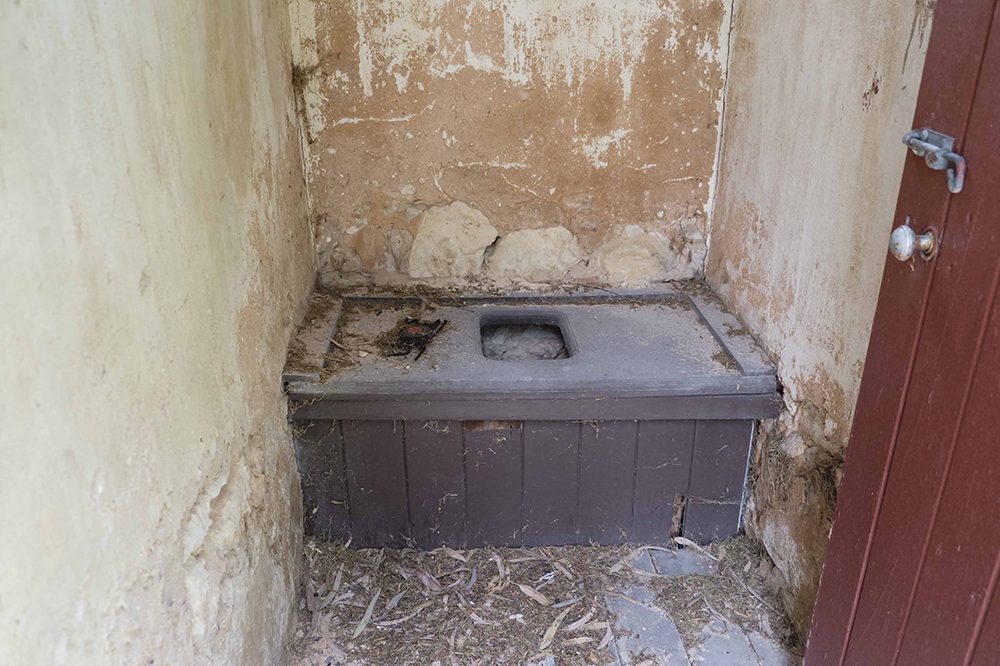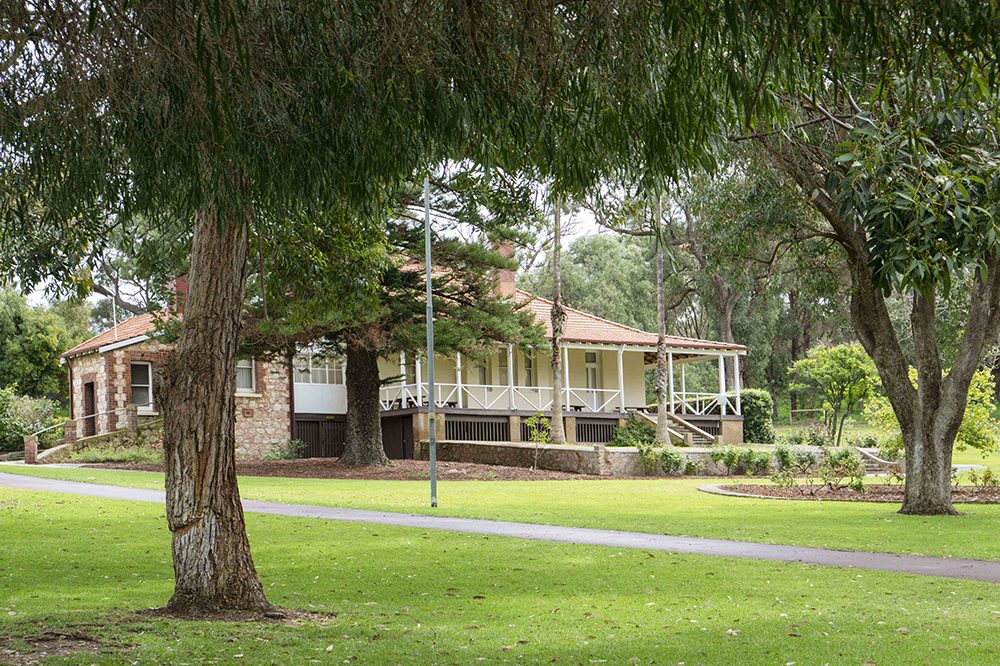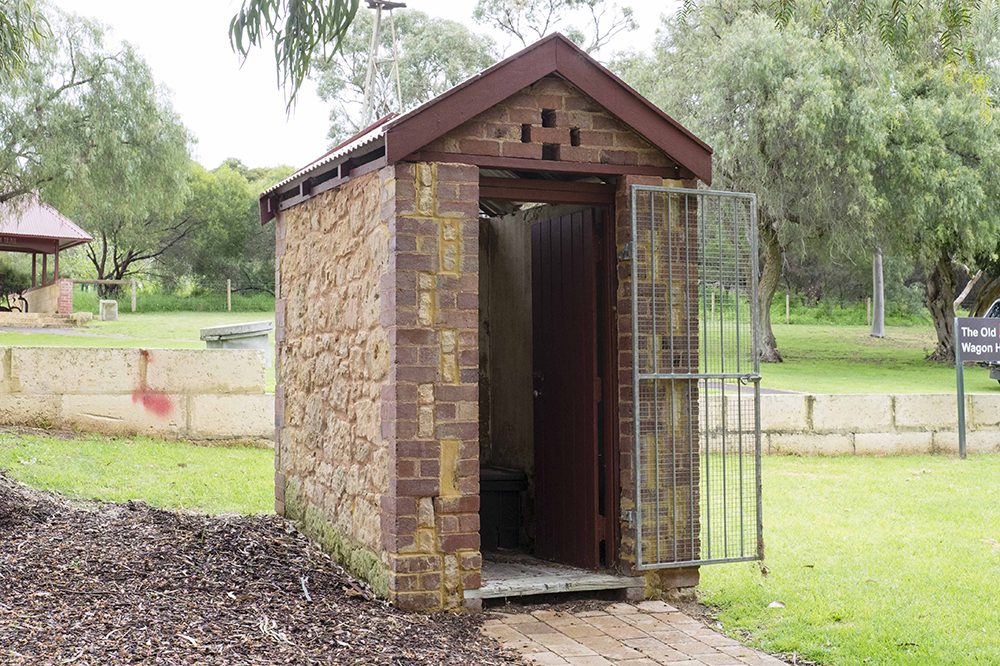Providing some of the necessities of life to the early settlers, the size of the estate can be measured by today’s boundaries stretching from Rollinson Road to the north, the coast to the west, Hamilton Road to the east and south as far as Christine Crescent in Coogee.
Early history
In approximately 1866, Charles Manning started to develop the land to the south of the lake and built a larger home in a Spanish hacienda style, from materials from his estate, and named it Davilak. The ruins of this farm are currently under conservation management, and can be seen clearly from the road, which follows the original crushed limestone track entering the Estate.
Charles’ son, Lucius developed Davilak into a big farm, extending the house, stables and dairy, and planting rose gardens and an extensive vineyard surrounded by stonewalls, an orchid house and exotic orchard, the Mulberry, Olive and Carob trees still remaining.
Azelia Helena Manning, the second child of Lucius Alexander Manning and Florence Augusta Bickley, was born 1872 at Davilak, where she and her siblings all grew up and in 1900, was married there, to John (Jack) Ley.
The children were educated by a governess in their own schoolroom at Davilak House, and all of the children were fond of riding, and had their own horses, but Davilak gradually declined as a farm, particularly after Alfred, (the oldest child, Azelia’s brother) died in 1924, and Florence, (fondly called Granny Hall), died at ninety seven (97) in 1946, when the family interests passed to Alfred’s brother Victor who died in the late 1930s.
The property was inherited by Victor’s son Colin who decided to sell Davilak, which continued to decline and eventually burnt down in 1960.
Recent history
In the late 1970s what remained of the Davilak Estate was resumed by the State Government and developed into the current recreation park.
Azelia had begun building the Manning Tree House, (now Azelia Ley Homestead Museum), on the west banks of Manning Lake in 1915, when her mother, Florence Manning, had divided Lucius Alexander’s estate into portions for each of her children, and 152 acres was transferred to Azelia.
The house was completed in 1923, although it was not until after her husband’s death in 1927 that Azelia came to live there permanently until her death in 1954.
The house was constructed of limestone with two distinct wings – the main residence and the kitchen wing which were connected by an enclosed verandah. Azelia guarded her grounds with the aid of a shotgun, fired from the verandah at anyone who dared venture onto her property.
The gardens surrounding the Museum have several heritage trees, including pomegranate, quince, fig, orange and hawthorn, and rose gardens containing oak trees planted for the Jubilee, as well as original outbuildings, coachman’s quarters, toilet and stables.
















